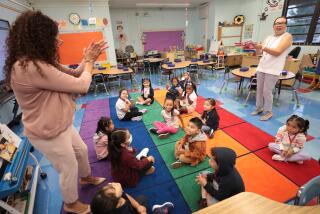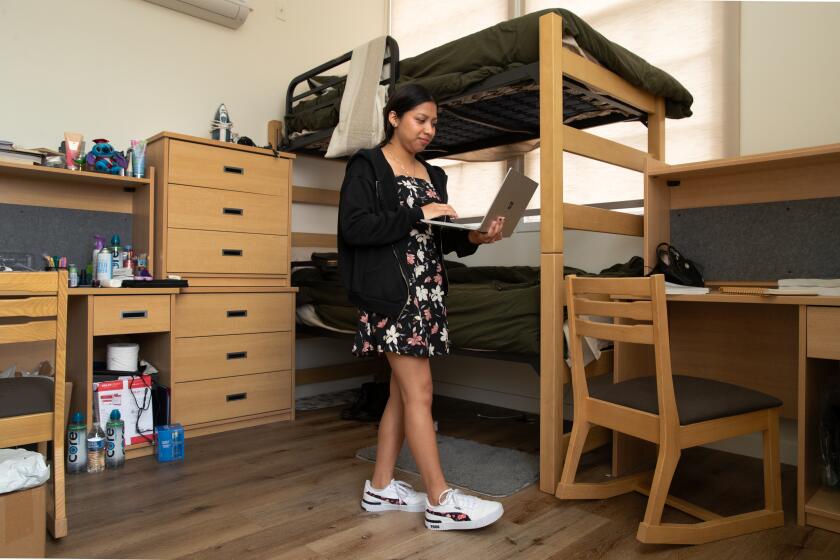Editorial: Want to know the wrong way to close schools? Just look to Oakland

If California school district officials need a lesson on how not to deal with declining enrollments, they can look to Oakland.
Amid ongoing community protests, the Oakland Unified School District board voted Tuesday to close seven schools and merge two more over the next two years to reduce the operating deficit. There’s no doubt the district had to do something serious about its finances. It has been through two separate periods of irresponsible spending that landed it in serious deficit. It received a couple of bailouts from the state and is still in state receivership.
Its enrollment, like those in districts statewide, is in steady decline, and it’s operating twice as many schools as other Bay Area districts with similar student populations. As a November warning letter from the Alameda County Office of Education noted, the district was expanding its staff even as its student population was dropping markedly each year.
In fact, Oakland Unified officials had plenty of warning that bad times were coming but didn’t seem to take this seriously enough until the letter arrived. And then they compounded their failure by notifying students and their families only in late January about the schools they were planning to close. The closures disproportionately affected Black neighborhoods; none of them were schools where white students are overrepresented relative to the district’s racial and ethnic composition.
Lower birth rates in California mean fewer students. School districts see this as a problem, but it could be an advantage.
What wasn’t being talked about in these recent weeks was the possibility of creative alternatives, such as seeking community service providers to rent space on its campuses, many of which serve as neighborhood hubs. Nor was there adequate time for the multiple public hearings that should have taken place before Tuesday’s vote or extensive consultation with the affected communities about how the school district could at least soften the blow. And why didn’t state officials, who still have fiscal oversight of the school district, raise the alarm and get this process started earlier?
In some ways, Oakland is an outlier. Most school districts have kept an eye on their reserves and spend within their means. But most of them face declining enrollments as well, and many probably will have to close or consolidate some of their campuses over the coming decade.
Oakland Unified is down to a couple of hundred students in some of the schools it plans to close. Several years ago, Oakland was among many districts to create smaller schools to improve campus atmosphere and student achievement. Smaller schools often help, but there’s a point at which a school has too few students to offer a wide variety of academic programs, fill a class or afford its own principal and administrative staff. No matter how well funded a school is, it probably can’t offer an AP course in electronics and magnetism for just two students.
The school district is dropping toward 400,000 students. There aren’t enough teachers, counselors or nurses for hire. It’s time to envision a smaller school district.
Wise school leaders across the state should start thinking now about which campuses might be most likely to close as enrollments drop and whether there are alternatives to closure. Maybe not every school needs a full-time principal; perhaps teachers could be empowered as part-time administrators. Maybe school districts can build affordable housing for teachers on a portion of a campus, or share space with community organizations.
If closing a school is the only option, they must offer help to students and communities that lose their nearby schools with, at the least, free transportation for dislocated students. A top priority should be avoiding closures in the poorest neighborhoods. In some cases it might be better to have students from other neighborhoods bused to those schools.
School officials should also conduct a thorough study to determine whether school closures will end up costing the district more if it drives more families away from district schools.
There’s no easy way around Oakland Unified’s problems. No matter what action the board took, or when, school closures were going to bring heated protest and harm some kids. But the district could hardly have bungled this any worse.
Take note, California school districts. This isn’t what you want for your future or that of your students.
More to Read
A cure for the common opinion
Get thought-provoking perspectives with our weekly newsletter.
You may occasionally receive promotional content from the Los Angeles Times.








